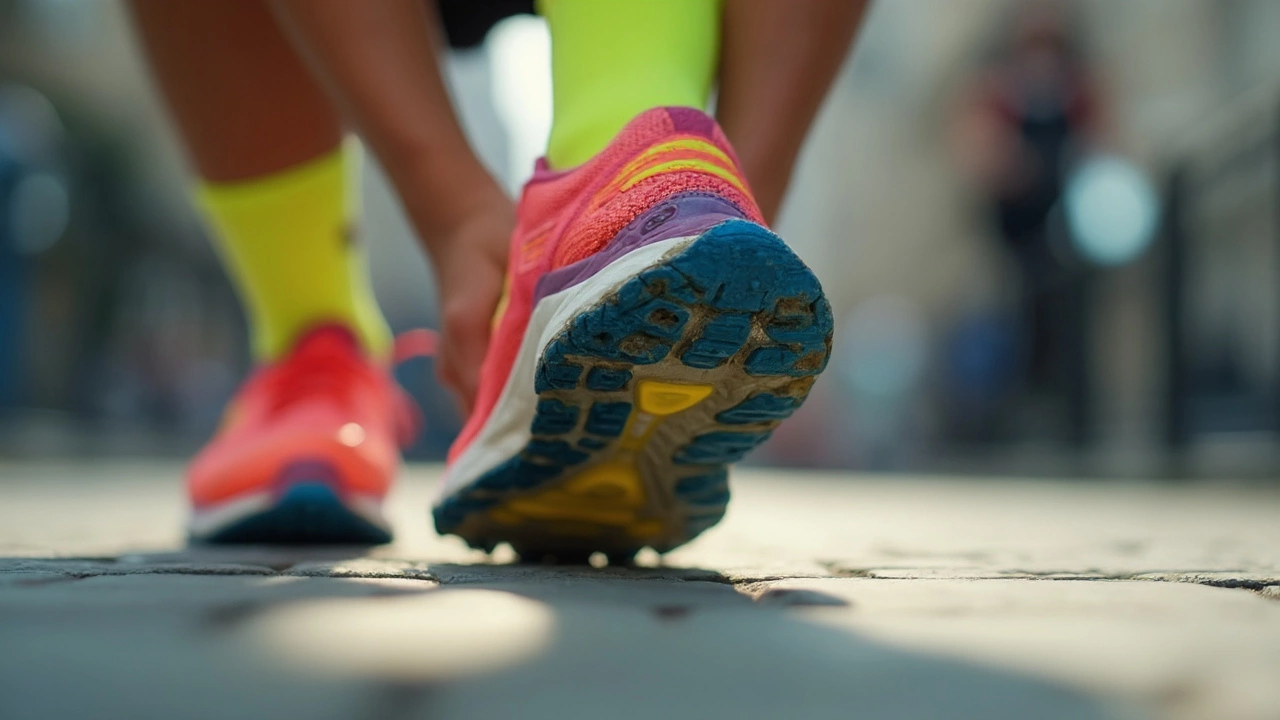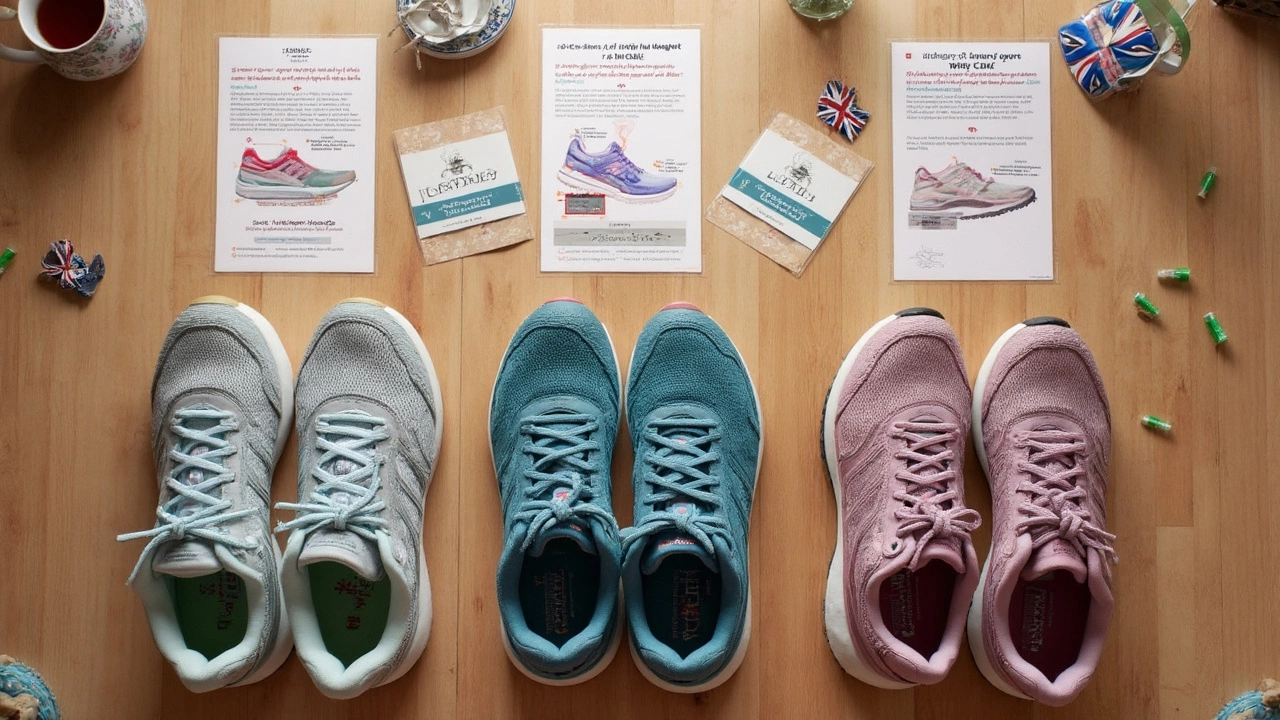When to Replace Running Shoes: Signs, Science, and Smart Tips

Ever thought your running shoes are playing dirty tricks on your feet? It’s wild, but those comfy sneakers you love can suddenly turn from friend to foe. Most runners trash their shoes way too late. Shoes look fine on the outside, but on the inside? They’re tired, squished, and begging for retirement. Clinging to them actually bumps up your risk for blisters, knee pain, and even weird injuries you never saw coming. Science even says busted shoes mess with your gait, throwing off the natural roll of your stride. So, hanging on to old kicks just isn’t worth it.
The Real Lifespan of Running Shoes: Myths and Truths
Forget what shoe ads say—there’s no magic number stamped on the sole that tells you when running shoes croak. Still, most experts throw around 300 to 500 miles (480 to 800 kilometers) as a rule of thumb. That might sound like forever, but let’s break this down. If you’re lacing up three times a week for a few easy five-milers, you’ll cross that boundary in less than a year. Logging more intense miles—think marathon training—means you’ll burn through shoes even faster, sometimes in four or five months. The crazy thing? Even if shoes sit untouched in your closet, their foam breaks down slowly just from exposure to air and heat. So that old pair from two years back? Not so fresh anymore.
The turning point isn’t only about accumulated miles. Surfaces matter. Pounding pavement grinds down cushioning much sooner than running trails, which are generally gentler. Your weight and running style also play big roles. Heavier runners or those who land hard wear out shoes much quicker. Loads of studies, including a huge one published in the British Journal of Sports Medicine, link worn-out shoes to higher risk of shin splints and knee soreness. It’s not paranoia—it’s just science catching up with what old-school runners always suspected.
Brand and model matter too. Max-cushioned shoes tend to lose their bounce even if the upper still looks pristine. Minimalist shoes deteriorate more slowly, but the thin soles leave fewer clues about wear. Don’t trust appearances. Shoe materials, especially EVA foam, can degrade long before the treads look smooth. That means some shoes betray you silently. Here’s a fun fact: Brooks once ran a test and found that identical pairs of running shoes showed significant differences in shock absorption after only 250 miles, depending on runner build and running pace.
Another mind-bender: rotation can save shoes. Stashing a second or third pair in your closet and switching each run gives the midsoles time to recover, literally letting the foam breathe. Studies show shoe rotation might even cut your injury risk by 39%. So, if you’re serious about preserving those favorite trainers, it’s totally worth doubling up.

Signs It’s Time to Throw Away Running Shoes—Even If They Look Okay
There’s one way to tell for sure that shoes are toast—pay attention to how your feet and legs feel. Picking up nagging aches after a run? Old shoes could be the culprit. The first red flag: you notice sore arches or dull pain in your knees or heels that wasn’t there before. It creeps in gradually. That “just past their prime” window is sneaky, and runners often brush the aches off as age or tougher workouts. But swap in a new pair, and magic happens: suddenly, the annoyance vanishes. That’s your answer right there.
Let’s talk visuals. Turn your shoes upside down. Look at the tread. Bald spots on the sole, or chunks of rubber gone, mean your grip is fading—not just for show either, since slipping hazards go up big time. Next, squeeze the midsole between your thumb and finger. Squishy used to be good; now it feels dead and unyielding. Or maybe you can feel the outline of stones through the sole when you run—another bad sign. Shoes losing their shape, looking lopsided, or having material bunched up in odd places suggest your stride is pushing the shoes far out of alignment.
Here’s one not many people check: flakes and cracks in the midsole foam. The foam might look a little chalky, sometimes with creases that don’t bounce back even after a good night’s rest. The inside lining counts too—holes and torn fabric can mess with fit, rubbing your feet raw and making blisters more likely.
Don’t forget the smell test. If your shoes stink even after washing, bacteria may have broken down the inner structure, making the shoe less supportive. Sounds gross, but it happens. Heel counter losing stiffness? To test, press the back of the shoe—if it collapses instead of resisting, the support’s gone. Lacing systems matter too. Once eyelets start to rip or the shoe doesn’t hug your foot evenly, you’re risking a twisted ankle, especially on uneven trails.
If your gait seems suddenly clumsy, or you notice more pebbles inside the shoe, trust your gut. Your mileage log might say the pair isn’t too old, but your feet will tell you the real story. Many runners keep a tiny note, scribbling down the start date of each shoe in a notebook or tracking miles on their phone. That can help catch sneaky wear before injuries crop up. If you can’t remember the last time your shoes felt truly comfortable, that’s the clearest sign.

How to Stretch the Life of Your Running Shoes—and Know When They’re Done
If you’re anything like most runners, the idea of saying goodbye to your favorite kicks stings a little. But there are legit ways to help shoes last longer, without sacrificing your health. First off, reserve those nice running shoes for actual running. Wearing them for errands, dog walks, or hanging out at home piles on miles without you noticing. Instead, get a cheaper pair for casual wear—that simple switch saves so much cushioning for the miles that really count.
Let shoes dry fully between runs. Wet shoes—whether from sweat or rain—wear down faster because moisture breaks foam down over time. Stuff shoes with newspaper or use a shoe dryer to soak up water when needed, but avoid direct heat (no hairdryers or radiators) since that can warp materials. Gritty dirt and tiny pebbles can sand away at the tread, so gently clean the soles after especially muddy runs. Don’t machine wash them, since detergents and rough agitation destroy glue bonds and weaken fabric.
Shoe rotation isn’t just for the gear-obsessed. Having two or even three pairs in different stages means you can match the shoe to the day: plump, fresh cushioning for long runs, tougher or worn pairs for short recovery jogs. Trail runners often have one mud-ready pair and a drier road shoe. Some marathoners buy two pairs of the same model and slowly break in the second pair as the first wears down. That means no big shock when you finally move on—your body adjusts seamlessly.
If you love tracking things, plenty of smartwatches and running apps offer a shoe tracker where you log miles per pair. You’ll get a digital nudge when it’s time to replace them. No worries if you’re old-school—just jot a little note on your calendar every time you break out a new pair. Some people even mark the start date right on the shoe’s tongue in permanent marker.
When shoes are truly done, don’t just send them to a landfill. Tons of brands now run recycling programs—Nike’s Reuse-A-Shoe, for example, grinds down sneakers for playgrounds and athletic tracks. Some stores take shoe donations, giving your worn-out trainers a shot at a new life as housing insulation or even road foundation materials. Think of it as good running karma.
But whatever you do, avoid the temptation to buy closeout shoes that have clearly sat in boxes for years. Their foam is probably already deteriorating. When it’s time for a new pair, shop in the afternoon (your feet swell during the day), bring your best socks, and don’t be shy about jogging around the store for a minute. Replacing your beloved shoes at the right moment means you run safer, recover faster, and keep chasing that runner’s high without a hitch. If you listen to your body, keep a sharp eye on your shoes, and don’t cling to nostalgia, your runs will thank you.
